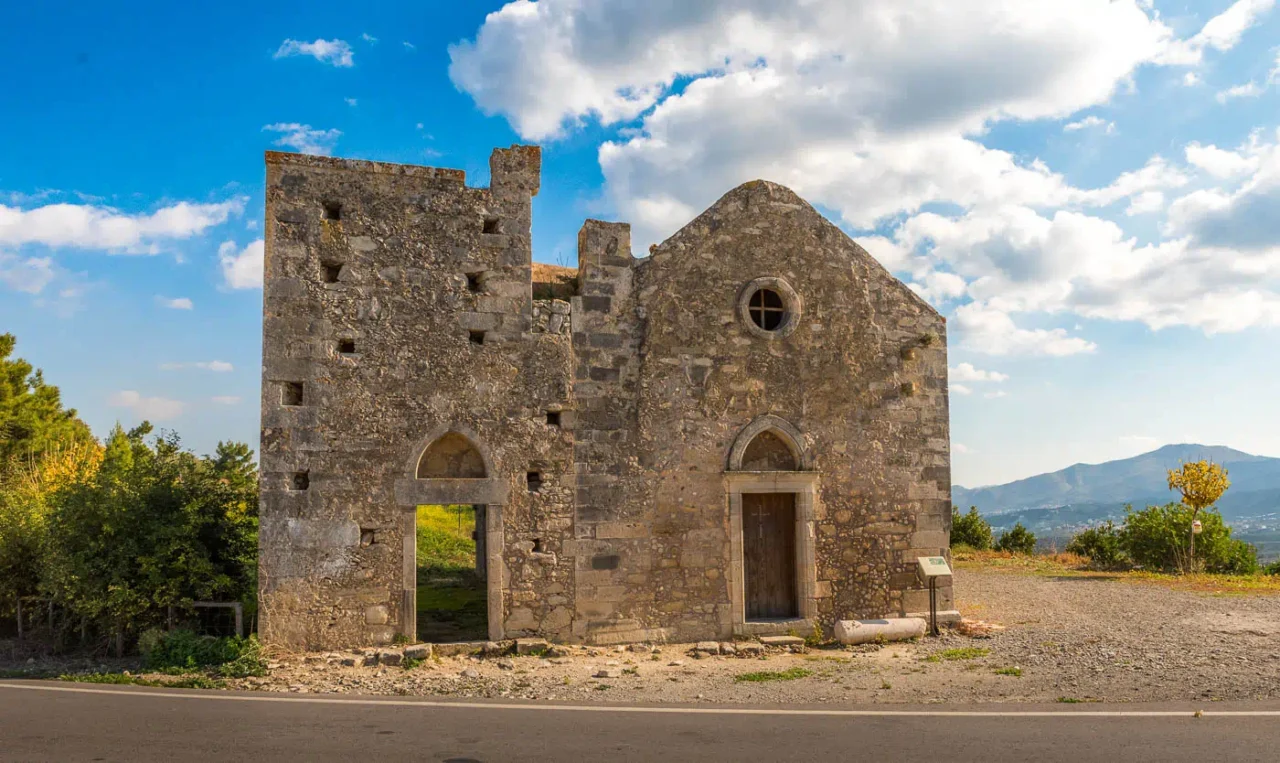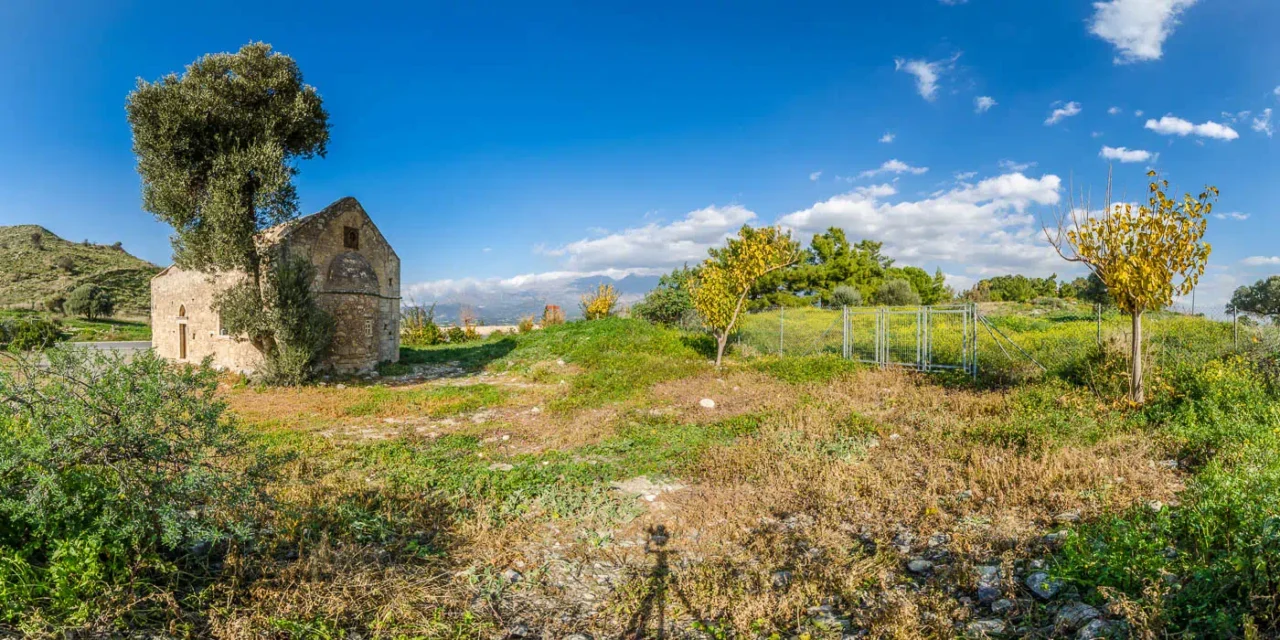

The Aghios Georgios Falandras Monastery: A Glimpse into Crete’s History
Perched atop a hill overlooking the ancient ruins of Phaistos, the Aghios Georgios Falandras Monastery stands as a silent sentinel, its weathered stones whispering tales of Crete’s rich and tumultuous past. While the exact date of its establishment remains elusive, the surviving church structure hints at its construction during the late Venetian era.
The monastery’s existence finds mention in historical documents as early as 1586, when a deed transferred ownership to the monk Auxentios Loumbinas. Further evidence of its operation during Ottoman rule emerges from legal papers dating back to the late 17th and early 18th centuries, with one document mentioning the abbot Neophytos Tzortzi. Sadly, the monastery’s existence came to an abrupt end during the Greek War of Independence in 1821, when it was razed to the ground by Ottoman forces.
The monastery’s centerpiece, the spacious church, belongs to the type of single-aisled barrel-vaulted churches. On the northwest corner, a tower-like belfry stands, reminiscent of the one found at the Vrontissi Monastery. The church was likely double-aisled, as suggested by the large arch on the north side visible from the exterior.
Surrounding the church were various buildings, all in ruins by the late 19th century. Unfortunately, today, no trace of these structures remains, as they were used as building materials in the 1950s.
The toponym “Falandra” or “flandra” is believed to be a corruption of the word “Filanda” (meaning “silk mill”), hinting at the monks’ involvement in sericulture. Another theory suggests that this site was once known as Melikas, where Saint John the Stranger established the Monastery of Saint George of Douvrikas in the second half of the 10th century.
Despite its physical disappearance, the Aghios Georgios Falandras Monastery continues to hold significance as a tangible link to Crete’s vibrant past. Its story intertwines with the region’s religious traditions, Venetian rule, Ottoman occupation, and the fight for Greek independence. While the monastery’s buildings may be gone, its legacy endures, woven into the very fabric of Crete’s history.

